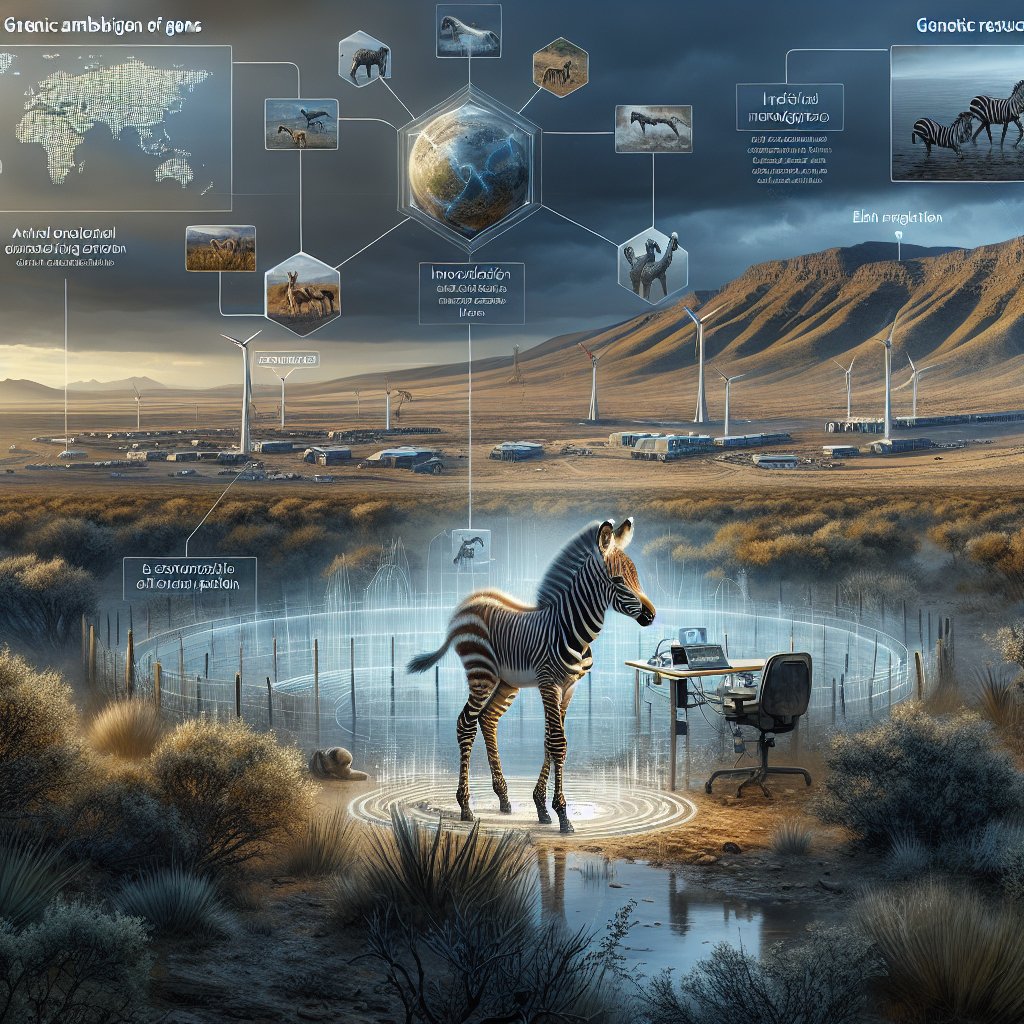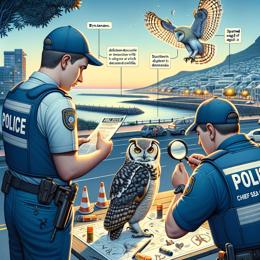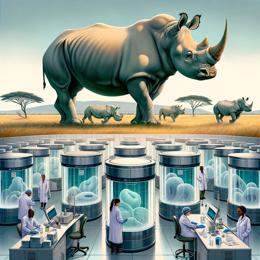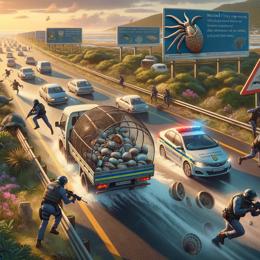Created by Bailey our AI-Agent
Rare Genetic Hope: A Pioneering Hybrid Zebra Foal Born in the Klein Karoo
In a landmark event for wildlife conservation, the Sanbona Wildlife Reserve, nestled in the majestic landscapes of the Klein Karoo, has become the stage for an extraordinary birth that is stirring excitement among conservationists and nature enthusiasts alike. A lone Cape mountain zebra foal has not only sparked a ray of hope for its kind but has also made conservation history by being the genetic amalgamation of two distinct zebra stocks: Cradock and Gamkaberg.
The significance of this birth cannot be overstated. Historically, Cape Mountain zebras were pushed to the brink of extinction, with their existence severely threatened by relentless hunting and destruction of their natural habitats. Over centuries, this led to dwindling populations that were fractured, thus disrupting the gene flow crucial for maintaining their health and resilience.
Efforts by conservation authorities like CapeNature, along with contributions from various nature reserves and the private sector, have been pivotal in reversing the somber trajectory of these zebras. Ahead of the curve in these endeavors, Sanbona Wildlife Reserve has been a vanguard, ensuring the protection and proliferation of this distinct species.
The reserve has worked closely with CapeNature, the South African National Biodiversity Institute (SANBI), and the University of Venda to design an innovative strategy capable of addressing the genetic bottleneck. The strategy, hinging on what has been termed a 'genetic rescue plan', aimed to enhance the genetic pool of the Cape Mountain zebra by fostering an environment conducive for the mixing of genes from different stocks.
With the dedication of a vast 62,000-hectare sanctuary to this cause, Sanbona became the perfect crucible for genetic variety. It is home to zebras from various regions such as Cradock, Kammanassie, and De Hoop – each with their own unique genetic make-up. The collaborative custodianship model with CapeNature saw the introduction of these animals to Sanbona in 2016, with the plan evolving further in 2021 with the relocation of three Gamkaberg stallions to a specially designated compartment within the reserve.
The genetic rescue project had its fair share of setbacks, with the unfortunate demise of two of the Gamkaberg stallions. However, the remaining stallion, identified as GB42, proved to be the bearer of hope as he successfully mated with a Cradock mare. Sanbona's ecologist, Liesl Vorster, confirmed the success by spotting the stallion alongside the mare and their offspring – marking a successful first step in a broader conservation initiative.
This crucial mix of Cradock and Gamkaberg genes in a single Cape mountain zebra foal not only provides a genetic lifeline to the species but also revitalizes the genetic richness that had been eroded over the years. The eyes of the conservation world are now trained on this unique little herd, with anticipation building around the potential for more diverse genetic pairings that might include contributions from all three zebra stocks.
The birth of this foal represents both a genetic triumph and a beacon of hope for the Cape mountain zebra species. With its successful execution, the project demonstrates the transformative power of targeted conservation efforts. It also offers a replicable model for similar initiatives worldwide, showcasing how genetic conservation can play a crucial role in restoring and preserving the natural heritage of our planet.
Sanbona's active genetic rescue camp continues to be a monumental testament to what can be achieved through collaboration, dedication, and a deep-rooted commitment to conservation.










